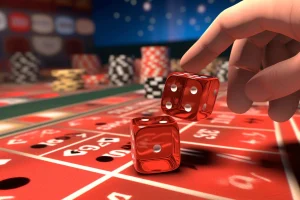
Bluffing is a key skill in poker that can make you more profitable. But mastering this art requires practice and precision; thus, practicing will be your best friend when it comes to practicing this art form.
Bluffing is the art of deceiving an opponent into thinking you have a powerful hand when in fact, you don’t. Although this technique can be risky and challenging, the rewards can be enormous.
Betting intervals
One of the most crucial elements in determining your chances of winning at poker is betting interval. A common pattern involves making several small bets in succession followed by an influx of large stakes on one hand. As such, playing low stakes poker can be costly exercise in patience and foresight; especially for players with high expectations for a winning hand where odds of meeting those bets are slim to none. It is no wonder then that bluffing opponents becomes an art form; keep their bets small by decreasing wager size incrementally.
Limits
Bluffing is an essential skill in poker and should be part of your strategy. However, you should know the limits in the game you are playing before attempting to bluff.
Limits can make it more challenging to bluff, as they limit how much money can be raised or bet. Therefore, only engage in this strategy when you have solid reasons to believe that you will win.
Position is crucial when bluffing, as you should be able to observe your opponents’ reactions on the board. By doing this, you can assess whether they are weak and likely to fold their marginal hands.
Bluffing is an art that takes practice to master, so it should only be done occasionally. But with proper application and knowledge of its limitations, bluffing can be highly profitable – just make sure you use it wisely!
Side pots
Bluffing in poker is an essential skill for those who aim to achieve long-term success. Bluffing involves knowing when and how to play your hand, then betting accordingly.
One of the most effective methods of bluffing is through a side pot, which forms when one player goes all-in and all other players keep betting on the board. It’s essential to understand the side pot rules in poker as they affect your ability to bluff effectively.
There are two types of side pots: dry and active.
Dry side pots are those without chips. They can be an effective tool for bluffing when you have a weak hand or one with high potential to win.
However, you cannot win the side pot without also winning the main pot. Therefore, bluffing into the side pot may not be as advantageous as one might think.
Bluffing
Bluffing is an integral skill in poker. It enables you to play more aggressively and maximizes your expected value.
However, bluffing is only beneficial in certain scenarios. When the odds are on your side and it will give you a great opportunity to win money, then bluffing can be an effective tool for winning big prizes.
Bluffing with fewer players is usually recommended, as there’s less likelihood that you’ll get called by someone with a stronger hand. On the contrary, bluffing with more people carries greater risk as there is an increased chance your opponent may call you down.
Another type of bluffing is semi-bluffing, which involves betting with a hand that has low showdown value now in the hopes that it will improve over time. This strategy can be effective as it takes away an opponent’s potentially strong hand before they even realize they have any equity in the pot.
Famous Poker Players Bluffing
Bluffing is an integral component of poker strategy, yet one of its most difficult elements to master. Being caught bluffing can be very disheartening; however, the best way to learn from mistakes is not being afraid to make them in the first place!
Bluffing only works when your opponent believes you represent a powerful hand, which you are actually representing. One effective strategy to accomplish this goal is by hinting towards specific winning hands (i.e. flush or straight) against which yours would have trouble winning (such as flushes or straights). Or use semi-bluffing by betting with weaker hands such as two pairs or four to a flush).
Your opponents’ reputation plays a huge role in deciding whether or not you bluff. For instance, tight players’ bets tend to be seen as showing strength so their bluffs will likely fail more easily than otherwise.
As part of your risk analysis, it is also crucial to assess how much money stands to be lost should your bluff be discovered. When playing high-stakes games, losing more than you can afford could have dire repercussions for both sides of the table.








